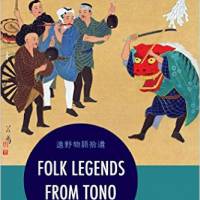"Folk Legends from Tono," takes the reader inside a land of superstition and pragmatism, farming and faith. The tales unravel in short vignettes, loosely grouped by myriad topics ranging from "Biology and Human Emotion" to "Survival on the Edge."
Folk Legends from Tono, by Kunio Yanagita and Kizen Sasaki, Translated and edited by Ronald A. Morse.
170 pages
Rowman & Littlefield, Folklore.
The stories are hard to forget, from the "woman with wild hair" who laughs in the face of a gun, or the young mother who transforms into a serpent, leaving her forlorn child and an awestruck village. Although populated with fantastic creatures, the tales reveal many down-to-earth details about the values and priorities of rural life, and authentically illuminate a culture of the recent-past with simple but eloquent charm.
In one tale, a kappa (water sprite) writes a letter of apology for its mischief, while a fox teases a middle school student by changing into a rabbit, a young girl and then a cat, determined to trick the boy out of his package of beef — the fox leaves empty-handed at last. The book ends with a biography of "Japan's Grimm" Kizen Sasaki and a background to the collection itself. The tales were gathered in two main volumes spanning over 25 years, beginning in 1912.
You don't have to be a yokai (mythical creature) fan to enjoy these tales of quiet humor and disquieting suspense; steep yourself in their simplicity and wisdom, and step into the ever-present past.
Read archived reviews of Japanese classics at jtimes.jp/essential.



